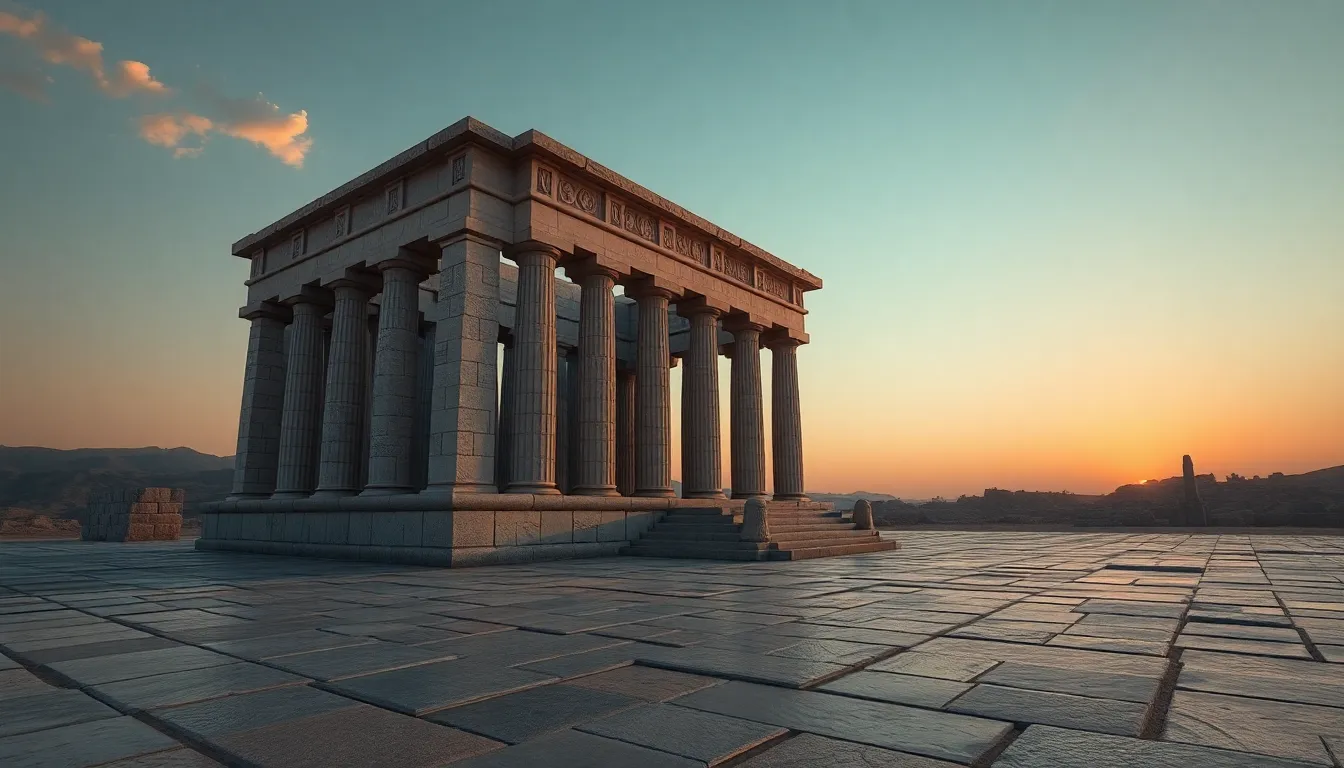The Sacred Geometry of the Temple of Philae: A Spiritual Insight
I. Introduction
The Temple of Philae, dedicated to the goddess Isis, is one of the most significant archaeological sites in Egypt. Nestled on an island in Lake Nasser, its stunning architecture and serene beauty have captivated visitors for centuries. The temple is not only an architectural marvel but also a profound representation of sacred geometry, which plays a crucial role in ancient Egyptian architecture.
This article aims to explore the spiritual significance of the Temple of Philae’s design, highlighting how sacred geometry intertwines with the temple’s historical and religious context.
II. Historical Context of the Temple of Philae
The origins of the Temple of Philae date back to the reign of Ptolemy II, around 280 BC, with further additions made by subsequent rulers. The temple complex served as a major religious center for the worship of Isis, one of the most revered deities in the ancient Egyptian pantheon.
Throughout history, the temple faced various challenges, including the rise of Christianity, which led to the temple being repurposed as a Christian church, and the construction of the Aswan High Dam, which threatened to submerge the site. The relocation of the temple in the 1960s was a significant event in its preservation.
The Temple of Philae’s significance in ancient Egyptian religion cannot be overstated; it was believed to be a gateway to the afterlife, where the goddess Isis guided souls to the underworld.
III. Understanding Sacred Geometry
Sacred geometry refers to the geometric shapes and proportions that are significant in nature and spirituality. It embodies the belief that certain geometric patterns and ratios have inherent spiritual meaning and power.
- Principles of Sacred Geometry: It includes shapes such as the circle, triangle, and square, each representing different aspects of existence and spirituality.
- Historical Use: Various cultures, including the Greeks, Hindus, and Native Americans, have utilized sacred geometry in their architectural designs and spiritual practices.
- Spiritual Role: Sacred geometry serves as a tool for meditation, reflection, and understanding the universe’s interconnectedness.
IV. Sacred Geometry in the Design of the Temple of Philae
The Temple of Philae is a stunning example of sacred geometry in architecture. Its layout and design incorporate key geometric shapes and alignments that reflect both practical and spiritual considerations.
- Geometric Shapes: The temple features various geometric patterns, including circles and squares, which symbolize the cosmos and the divine.
- Celestial Alignment: The temple’s orientation aligns with significant celestial events, such as solstices and equinoxes, demonstrating the ancient Egyptians’ profound understanding of astronomy.
- Symbolism: Each geometric element is imbued with symbolic meaning, linking the physical structure of the temple with the spiritual realms of Egyptian mythology.
V. Spiritual Insights Derived from the Temple’s Geometry
The sacred geometry of the Temple of Philae offers deep spiritual insights that resonate with visitors and practitioners today.
- Spiritual Awakening: Engaging with the temple’s geometry can lead to heightened awareness and spiritual awakening, as visitors connect with the energies embedded in its design.
- Meditation and Reflection: The harmonious proportions and tranquil environment encourage meditation, allowing individuals to reflect on their spiritual journeys.
- Visitor Experiences: Many visitors report transformative experiences at the temple, feeling a deep connection to the divine and a sense of peace.
VI. The Temple of Philae’s Influence on Modern Spiritual Practices
The influence of the Temple of Philae extends beyond its historical context; it continues to inspire modern spiritual practices and philosophies.
- Contemporary Movements: Many contemporary spiritual movements draw upon the principles of sacred geometry, integrating them into their practices.
- Modern Sacred Spaces: The use of sacred geometry in the design of new spiritual centers and spaces reflects the ongoing relevance of these ancient principles.
- Reviving Ancient Practices: Today’s spiritual communities often seek to revive ancient practices and wisdom, finding inspiration in sacred sites like Philae.
VII. Preservation and Restoration Efforts
Despite its rich history, the Temple of Philae faces challenges that threaten its preservation. Environmental factors, tourism, and urban development pose risks to its integrity.
- Preservation Challenges: Rising water levels, pollution, and the impact of tourism necessitate ongoing conservation efforts.
- Importance of Preservation: Maintaining the temple’s sacred geometry is vital for future generations to appreciate and learn from this ancient site.
- Ongoing Projects: Various restoration projects aim to protect and restore the temple, ensuring its legacy continues for centuries to come.
VIII. Conclusion
The Temple of Philae stands as a testament to the ancient Egyptians’ remarkable understanding of sacred geometry and its spiritual implications. Its design not only reflects the architectural prowess of its creators but also serves as a bridge to spiritual insights that continue to resonate today.
As we reflect on the significance of sacred geometry in our modern world, we are reminded of the timeless wisdom embedded in ancient spiritual sites. The Temple of Philae invites us to explore these teachings and connect with the profound mysteries of the universe.
We encourage further exploration of ancient spiritual sites and their teachings, as they offer invaluable insights into our past and present spiritual journeys.




